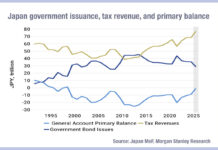The DESK asked interviewees from its ‘On The DESK’ profile interviews of the last ten years to assess the most surprising changes they had seen in market evolution**.
Dwayne Middleton global head of trading for fixed income at T. Rowe Price (US$1.79 trillion AUM) says, “The most unexpected development was the swift divergence from the anticipated simple ‘equitisation’ model for fixed income. At one point, 200 platforms were trying to electronify bond markets. Astute market participants realised the complexity and unique path of the fixed income market evolution.”
“The writing was on the wall in bond trading,” adds Lynn Challenger, global head of trading at UBS AM (US$1.7 trillion AUM). “Electronification, algo pricing and the venue dominance. We have seen this play out in every market and this past decade it was the bond market’s turn to evolve. What I am surprised about in the bond market is the lack of things that have not changed.”
There were also expectations around the outcomes of market evolution which have been challenged, says Lars Salmon, head of fixed income trading, EMEA, Fidelity International (US$817 billion AUM).
“When electronification accelerated, including automation, and multiple trading venues started competing with each other, the prospect of cheaper execution, not just in terms of bid/ask but in terms of fees/implicit venues fees, was probably a widely held view,” he notes.
Several unexpected aspects of the market changed considerably, and these have altered market structure and liquidity profile considerably.
“While the electronification of bond markets was beginning, the comprehensive transformation of market structure emerged through several factors: the significant shift of inventory from sell-side to buy-side institutions; the acceleration of dealer-automated market-making; and the emergence of a sophisticated exchange traded fund (ETF) liquidity ecosystem and third-party pricing infrastructure,” says Middleton.
Points that have not changed, Challenger notes, are the use of one-sided request for quotes for most fixed income securities types, the lack of derivative product offerings in credit, and the lack of a consolidated tape in Europe.
“I would have thought that we would have a lot more [credit] index derivatives traded liquidly in the market,” he notes. “We are now seeing the exchanges take another run at this product but let’s see if the market uses them.”
He also expresses shock at how slow moving the European consolidated tape is.
“One would think transparency would be mandated by regulators,” says Challenger.
Salmon adds that the net impact on costs of trading have not been realised.
“While bid/ask has probably generally benefited somewhat – although ultimately still much more heavily influenced by the market/liquidity environment – costs related to transactions have not really,” he says. “Business appears to remain captive to a significant degree with integration costs – order management systems (OMSs), different FIX message fields – and limited choice for certain instruments and convoluted pricing arrangements playing a role.”
Even for trading platforms, some services and tools have outperformed relative to expectations, making it hard to pin down the most unexpected outcome.
“It’s a tie,” says Iseult Conlin, managing director, head of US institutional credit, Tradeweb (US$2.35 trillion ADV in October 2024), “The growth and positive liquidity impact of portfolio trading and the proliferation of accurate composite pricing data for corporate bonds.”
“Ten years ago, I was sceptical about the liquidity transformation that ETF’s could facilitate and doubted that these products could perform successfully through extreme points of market volatility,” says Matt Howell, global head of derivatives and multi-asset trading solutions in Global Trading, T. Rowe Price. “I think the last 10 years have demonstrated time and time again that view was incorrect and ETF’s have successfully transformed the way that the bond market functions. They have impacted almost every aspect of trading from growth in liquidity provision, increase in program trading, explosion in electronic trading and a incredible range of tools for expressing increasingly nuanced views.”
This has enabled a considerable facility for electronic market makers, notes Sharon Ruffles, head of fixed income dealing EMEA, SSGA (US4.3 trillion AUM),
“The increase in electronic trading, particularly post Brexit, has been significant as has the increase in the various trading protocols available such as portfolio trading, auto execution, request for market, and all-to-all trading,” she says. “But I think most significant change has been the rise in liquidity provision from the non-bank liquidity providers. They have plugged a liquidity gap left by the reduction of bank balance sheets following the increase in regulation post global financial crisis.”
**This is part of the cover story in the Q4 2024 edition of The DESK magazine, to read the full article please contact ianrycott@marketsmedia.com
©Markets Media Europe 2024
©Markets Media Europe 2025













